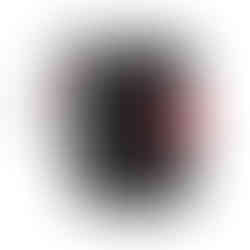QR Code Printing on Custom Merchandise: A Smart Way to Connect in a Tangible World
- Florida Custom Merch

- Jul 17, 2025
- 4 min read
In an increasingly digital world, QR codes are making a powerful comeback—especially when used on custom branded merchandise. Whether it’s a cotton tote bag, a reusable water bottle, a t-shirt, or even a coaster, adding a QR code can help brands bridge the gap between physical and digital experiences. But printing QR codes on promotional items comes with both opportunity and challenges. In this article, we’ll explore how businesses are using QR codes on custom merchandise, what to consider when printing them, and tips to ensure they scan reliably and make a strong impact.

Why Add QR Codes to Custom Merchandise?
QR (Quick Response) codes offer an immediate, touch-free way for people to interact with your brand. Scanning a code can lead to:
A special offer or coupon
Your website or product page
A video message or testimonial
Social media profiles
Event registration
Contact info or a digital business card
Customer feedback forms or review sites
The beauty of custom merchandise is its lasting power—unlike a digital ad that disappears in seconds, branded gear is kept, worn, reused, and passed around. When you combine that staying power with the easy access of a QR code, you create a brand touchpoint that’s both memorable and functional.
What Kinds of Merchandise Work Best for QR Codes?
While you can technically print a QR code on almost anything, some items are better suited than others due to shape, material, size, and usage.
Ideal Surfaces:
Flat surfaces (coasters, notebooks, packaging, tote bags)
Light-colored items with high-contrast ink
Apparel with a large imprint area (e.g., backs of t-shirts)
Hard goods like drinkware, tech accessories, or signage
Challenging Surfaces:
Highly textured materials like burlap or pulpboard
Curved or uneven surfaces like stress balls or small bottles
Very small items (pens, keychains, etc.)
Dark items with low-contrast printing
While QR codes can work on many materials, readability and scan-ability depend heavily on size, contrast, and clarity.
How to Ensure Your QR Code Prints (and Scans) Properly
When printing QR codes on promotional products, the stakes are higher than on paper. A code that doesn’t scan won’t just fail—it can frustrate your audience or hurt your credibility. Here are key best practices:
1. Maintain Minimum Size
The general rule is: the code should be at least 1” x 1” (25mm x 25mm).
The more data the QR code contains (like a long URL), the more complex it gets—and the more space it needs to print clearly.
2. Keep a Quiet Zone
A "quiet zone" is the blank space surrounding the QR code. Avoid printing any graphics, text, or logos too close to the code, as it can interfere with scanning.
3. Use High Contrast
A dark code on a light background works best (think black on white or navy on cream). Avoid printing light-colored codes or using metallic inks unless thoroughly tested.
4. Avoid Distortion
Make sure your code isn’t stretched, skewed, or compressed to fit a shape. The code must retain its square proportions to scan properly.
5. Test, Test, Test
Always scan a proof sample with multiple devices and apps before final production. A code that works on one phone might not work on another if it's borderline readable.
Strategic Uses of QR Codes in Marketing
When used creatively, QR codes can turn custom merchandise into active marketing tools. Here are a few strategic ideas:
At Events: Use branded items with a QR code linking to your digital brochure, signup form, or product demo.
For Loyalty Programs: Add QR codes to packaging or giveaways that take customers to a hidden loyalty reward or referral program.
For Tracking Engagement: Use dynamic QR codes that allow you to track scans and update destinations without reprinting.
To Increase Social Engagement: Direct users to your Instagram, TikTok, or LinkedIn pages with one scan.
For Fundraising or Donations: Charities can use QR codes on t-shirts or table tents at events to drive direct donations.
Printing Considerations
Before approving a custom merchandise order with a QR code, ask your vendor about:
The material and whether it affects print clarity
The print method (screen printing, digital, pad printing, heat transfer, etc.)
Whether a sample proof will be provided for testing
The file type they need (vector is often best)
Turnaround times if a last-minute change is needed
Be sure to communicate that the QR code is critical to the item’s function—it’s not just decorative. A small investment in extra testing and setup can save you the cost of reprinting or missed marketing opportunities.
Conclusion
QR codes on custom merchandise can make branded items smarter, more interactive, and more trackable—when done right. As businesses look for new ways to connect with customers in a hybrid world, this simple black-and-white square continues to prove its value.
Whether you’re hosting an event, launching a new product, or just want to drive more traffic to your site, adding a QR code to your promotional items is a modern twist on a classic marketing tool. Just make sure it’s sized right, printed clearly, and thoroughly tested—and your merchandise will do more than promote your brand; it will connect it.
With so many options available, choosing the right branded promotional item can be overwhelming. Since 2016, we, at Florida Custom Merch, have helped numerous businesses achieve success through the use of custom branded promotional merchandise. Hiring an expert can help you select the perfect item, save time and money, and, most importantly, maximize your results.
Thank you for reading! We hope you found this article helpful!
Most Popular Types of Custom Merch
(click on image to get more info)
#QRCode #CustomMerchandise #PromotionalProducts #BrandedItems #QRCodePrinting #MarketingStrategy #EventMarketing #ScanQRCode #CustomCoasters #CustomToteBags #HighContrastPrinting #DynamicQRCodes #CustomerEngagement #BrandVisibility #PromotionalGiveaways #QRCodeMarketing #CustomApparel #TechEnabledMerchandise #InteractiveMarketing #CustomBranding











